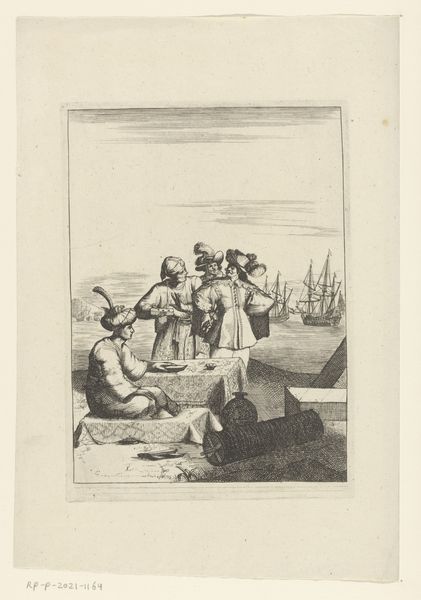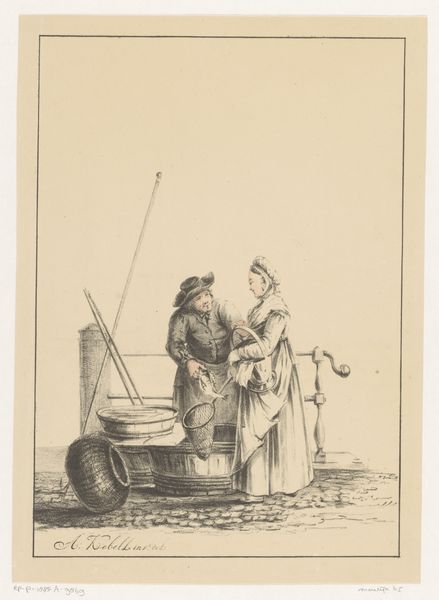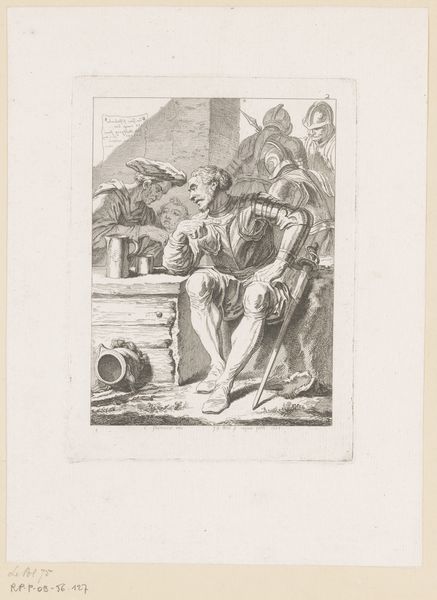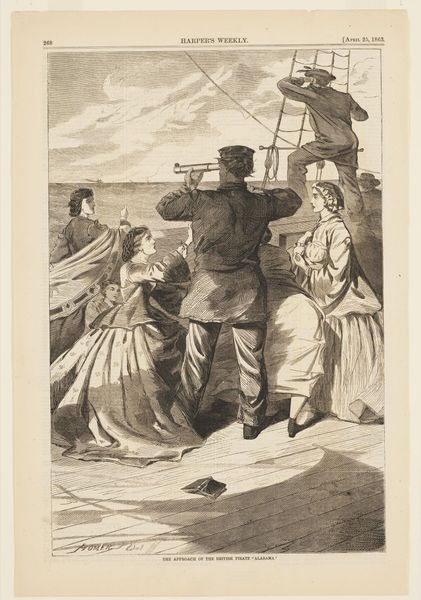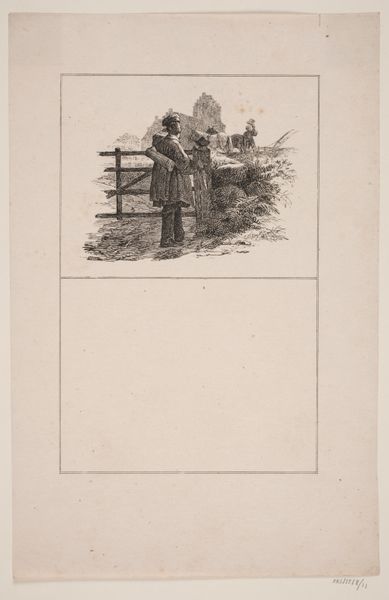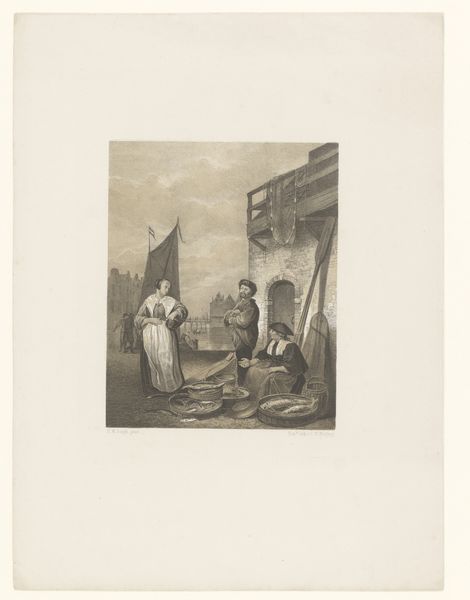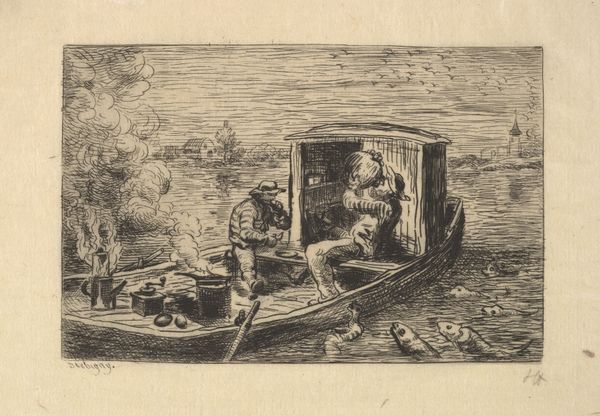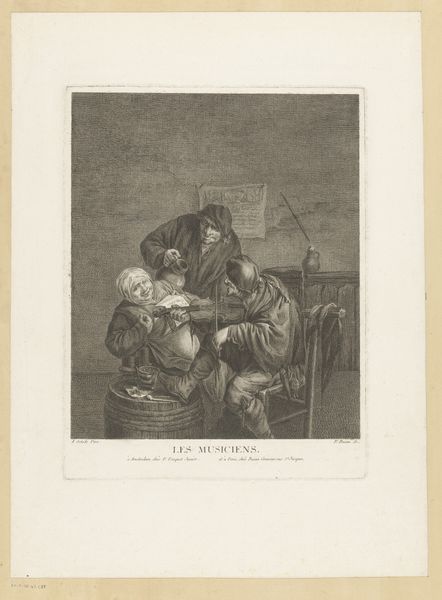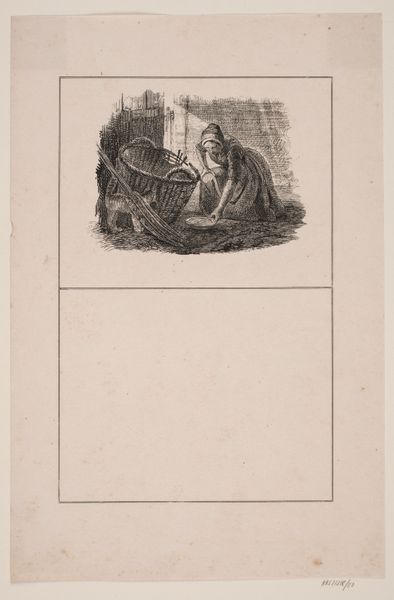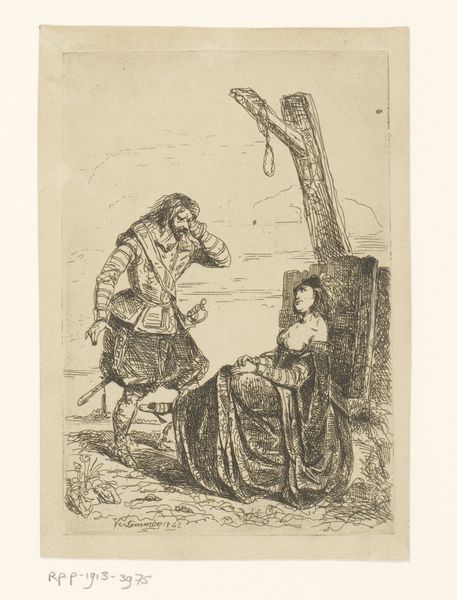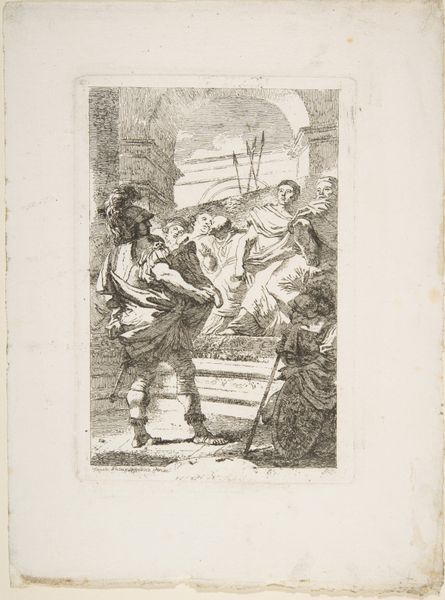
print, engraving
#
baroque
#
dutch-golden-age
# print
#
old engraving style
#
landscape
#
cityscape
#
genre-painting
#
engraving
Dimensions: height 210 mm, width 151 mm
Copyright: Rijks Museum: Open Domain
Curator: At first glance, the overall atmosphere seems poised and anticipatory. The figures are arranged almost theatrically on the shore, facing an incoming vessel. Editor: This is a fascinating 17th or early 18th-century engraving, "Vijf handelaren aan de kust, mogelijk in de Levant"—or "Five traders on the coast, possibly in the Levant." While the artist is, alas, anonymous, it resides here at the Rijksmuseum. Curator: The turbaned figures definitely give an exotic flavor, a signifier of "the Orient" that held great appeal – and posed significant political and economic considerations – in Europe at the time. What meanings do you ascribe to those details? Editor: Oh, the turbans and textiles signal, of course, a visual shorthand for trade and exoticism – the cultural cachet of goods coming from afar, mingling with local commerce. It taps into the symbolic language of power and exchange of goods and, yes, also cultural capital. See how that beautifully ornamented vase carries on its side what appears to be the face of a satyr or god from antiquity, turned to sell wares. Curator: A vital point! That juxtaposition highlights how such depictions also functioned within specific colonial power structures and contributed to constructing Europe’s vision of itself in relation to 'others.’ This wasn't a simple representation, but a performance of power dynamics made to gratify a wealthy audience back home. Editor: True, yet the very act of depiction also imbues them with a certain presence and, to some extent, respect. I notice the detail on the chests and boxes – physical containers, yes, but also symbolic vessels for ideas and interactions. The exchange is taking place literally but the moment also exists as something almost like a stage where roles are being negotiated. Curator: Interesting. This reminds us of the print’s dual existence: one of depicting trade negotiations, yes, but simultaneously participating in an exchange of ideas about the world beyond Europe, an imagined Levant, circulated back in the cities from which the ships came. Editor: Indeed, and the rendering itself – the medium of engraving – elevates that exchange through artistic interpretation. It takes something commonplace and transforms it into a valued object, laden with artistic, social, and historical significance. Thank you for bringing some light into this dark illustration. Curator: And thank you for decoding some of the cultural codes hidden in plain sight. It’s these symbolic economies that keep art history fascinating!
Comments
No comments
Be the first to comment and join the conversation on the ultimate creative platform.

